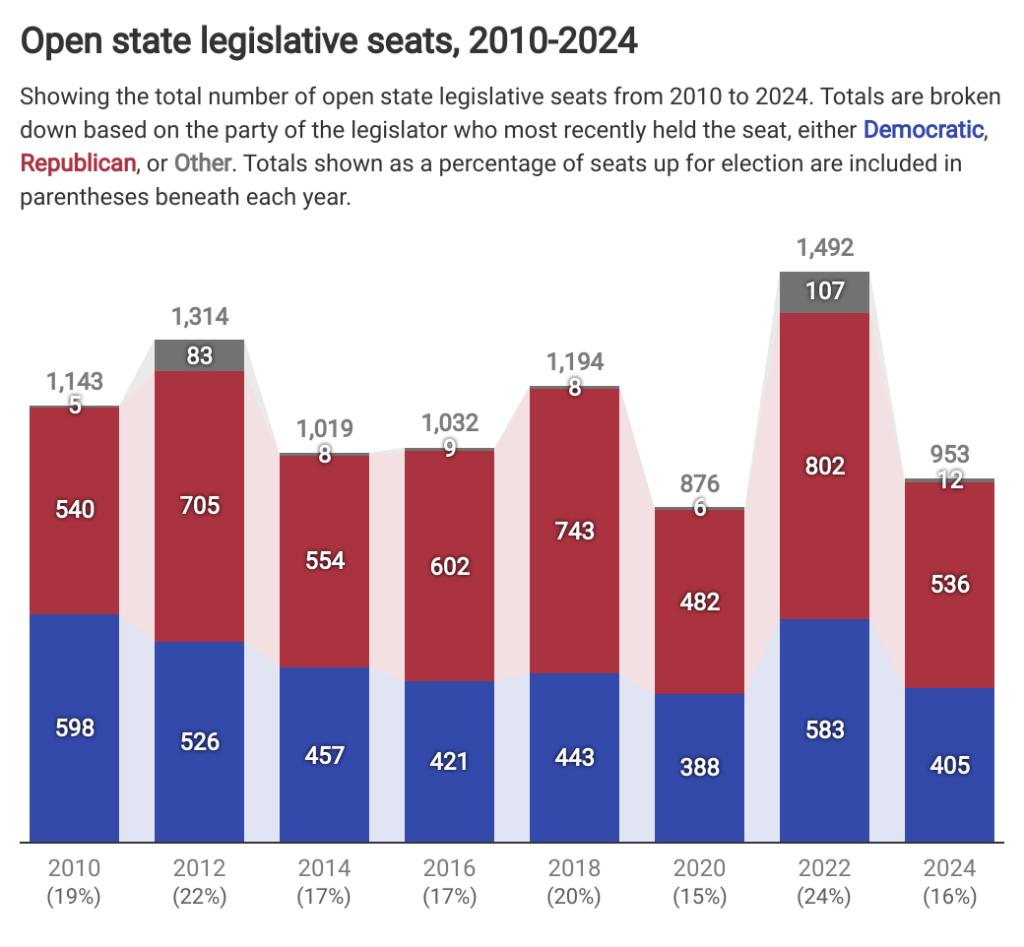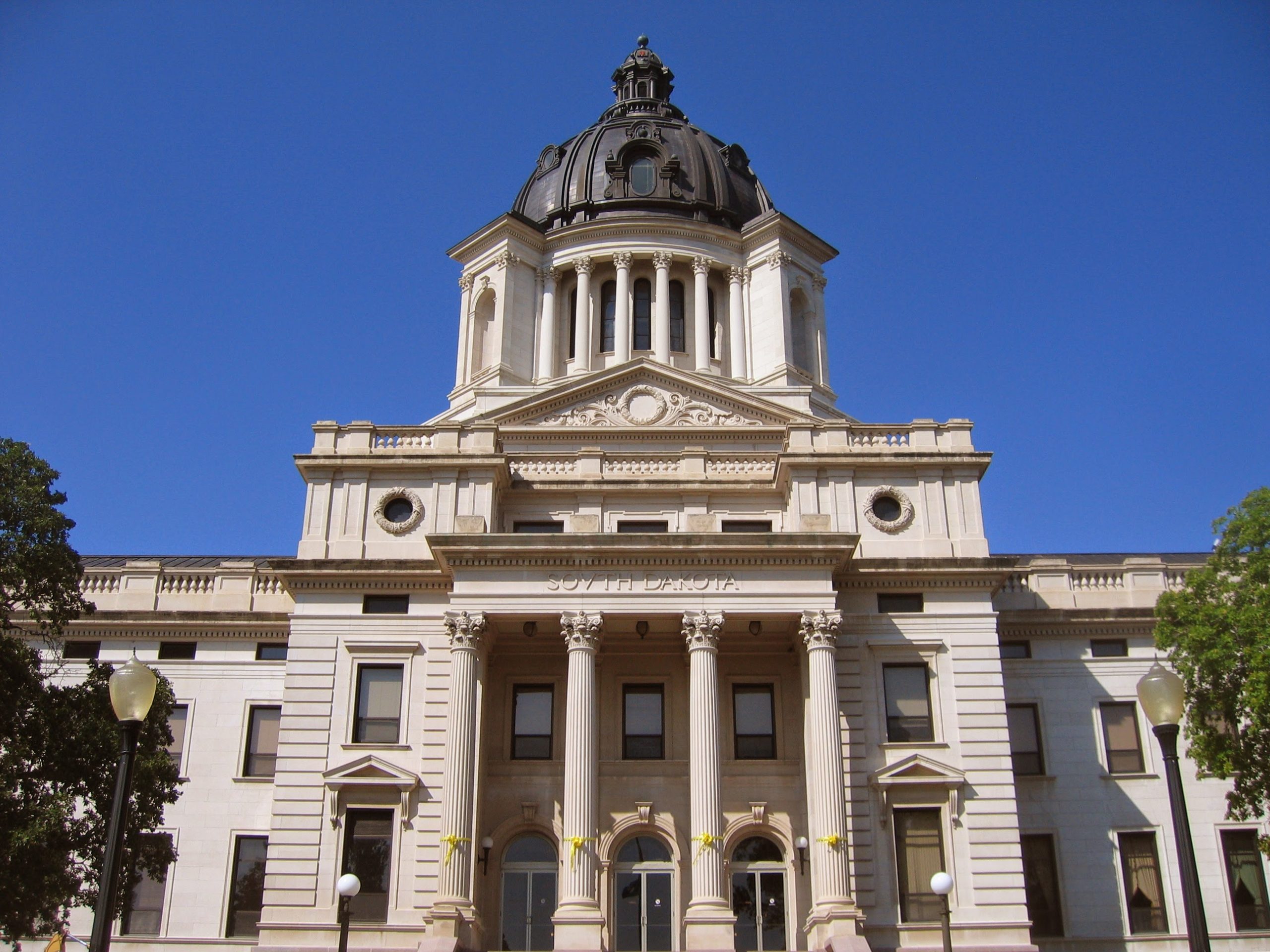This year there are 953 open state legislative seats, guaranteeing at least 16% of all seats will be won by newcomers. This is the second-smallest number and percentage of open seats since Ballotpedia began gathering data in 2010.

Ballotpedia uses the number and percentage of open seats to help determine the overall competitiveness of an election cycle. A greater number of open seats guarantees more newcomers entering legislatures and typically results in more candidates running for office. A smaller number of open seats guarantees fewer newcomers and typically results in fewer candidates running for office.
Some highlights are below.
- There are 405 open Democratic seats.
- There are 536 open Republican seats.
- There are 12 other open seats. This includes those most recently held by minor party or independent officeholders at the time of filing.
- The total number of open seats—953—is higher than in 2020 (876), the last time all 44 states held elections, representing a 9% increase.
Five states have at least 30% of seats open: Nebraska (60.0%), Montana (41.6%), South Dakota (34.3%), California (34.0%), and Missouri (30.6%). Four of these states have Republican trifectas, and one has a Democratic trifecta.
Three states have fewer than 6% of seats open: Connecticut (5.9%), Idaho (5.7%), and Illinois (4.3%). Two of these states have Democratic trifectas and one has a Republican trifecta.

Nebraska had the highest rate of open seats in four of the last eight election cycles. This is likely because Nebraska has only one, term-limited chamber, the Nebraska State Senate. The Senate has the highest percentage of state senators term-limited this year. Of the 25 seats up for election, 13 Nebraska senators, or 52% of the chamber, are term-limited in 2024.


